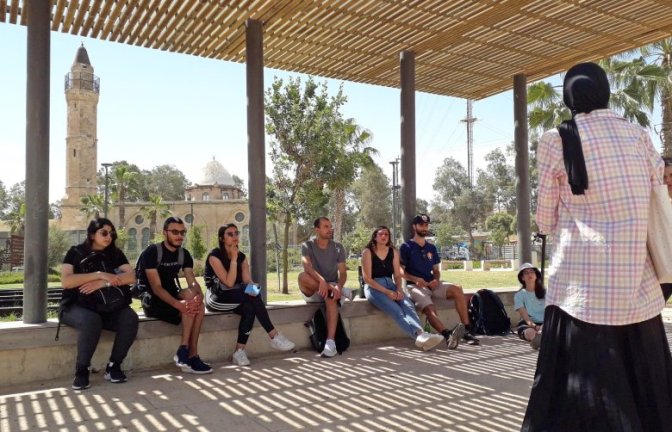Home > Oasis of Peace > Projects & Outreach > The School for Peace > Year’s End in the School for Peace
Year’s End in the School for Peace
Tuesday 20 September 2022

University courses
“I got to say things in this course that I wouldn’t dream of saying in other spaces,” said a Palestinian student, a participant in one of the eight university courses taught over the past year through the School for Peace. “The Palestinian participants expressed themselves in an authentic way that I did not previously get to meet, a voice that seems to be silenced for many reasons,” said a Jewish participant. At a time when other Jewish students tried to have Palestinian flags banned from their campuses, these courses give their participants the opportunity to hear the other side and talk about the issues that have separated them for so long.
Many of the participants – both Palestinians and Jews – reported learning new things and finding that when the conflict was discussed openly and honestly, the two sides could agree on common ground and gain new understanding without feeling threatened or discriminated against.
The courses were taught in the following: the School for Psychological Sciences, Tel Aviv University; the nursing school of Tel Aviv University; the department of Political Science, Hebrew University, Jerusalem; the department of Education, Ben-Gurion University of the Negev, Beer Sheva; the Teaching Certificate Training Program, Ben-Gurion University of the Negev, Beer Sheva; the Faculty of Social and Community Sciences, Ruppin Academic Center, Hefer Valley; the Department of Architecture, Bezalel Academy for Arts and Design, Jerusalem; and the Baruch Ivcher School of Psychology, Reichman University, Herzliya.
At present, new courses are planned for five departments in three schools.
Courses completed
Two courses came to a conclusion over the summer. One, the tour guides’, or Change Agents for Spatial and Historical Justice in the Israeli-Palestinian Context course, was the first course of its kind, and it was taught together with the organization Zochrot, which works to raise awareness of the Nakbah among the Jewish Israeli population. The course challenged participants to ask how they view a particular place in light of the “facts” they have been taught in school, or the new ones presented to them. Together, they developed a new tour program that would take people to four destroyed Palestinian villages, from Izjim in the Carmel to al-Khalasa in the Negev.
The Climate and Environmental Justice course finished, as well. This course has been taught for several years, and along the way it has looked at environmental destruction and salvation in light of the conflict – the way the two intersect and interact, and the fact that solutions for one must involve solutions for the other. The course participants organize field trips to demonstrate the issues that affect Palestinians and Jews in their environments, including the ways they coopt, use and abuse natural resources.
And finally…
A shout-out to Gilad Mulyan, a School for Peace alum of the Leadership Course for Change Agents in Mixed Cities. He is an activist for Haifa’s bilingual school, and he recently spoke in the Knesset in a hearing on the importance of granting recognition to the bilingual schools in Haifa and in the county as a unique stream in the educational system.


